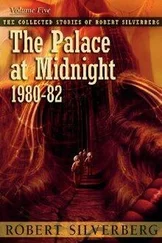Kermit Heartsong - Ukraine - ZBIG's Grand Chess Board & How The West Was Checkmated
Здесь есть возможность читать онлайн «Kermit Heartsong - Ukraine - ZBIG's Grand Chess Board & How The West Was Checkmated» весь текст электронной книги совершенно бесплатно (целиком полную версию без сокращений). В некоторых случаях можно слушать аудио, скачать через торрент в формате fb2 и присутствует краткое содержание. Год выпуска: 2015, Жанр: Политика, на английском языке. Описание произведения, (предисловие) а так же отзывы посетителей доступны на портале библиотеки ЛибКат.
- Название:Ukraine: ZBIG's Grand Chess Board & How The West Was Checkmated
- Автор:
- Жанр:
- Год:2015
- ISBN:нет данных
- Рейтинг книги:4 / 5. Голосов: 1
-
Избранное:Добавить в избранное
- Отзывы:
-
Ваша оценка:
- 80
- 1
- 2
- 3
- 4
- 5
Ukraine: ZBIG's Grand Chess Board & How The West Was Checkmated: краткое содержание, описание и аннотация
Предлагаем к чтению аннотацию, описание, краткое содержание или предисловие (зависит от того, что написал сам автор книги «Ukraine: ZBIG's Grand Chess Board & How The West Was Checkmated»). Если вы не нашли необходимую информацию о книге — напишите в комментариях, мы постараемся отыскать её.
Ukraine: ZBIG's Grand Chess Board & How The West Was Checkmated — читать онлайн бесплатно полную книгу (весь текст) целиком
Ниже представлен текст книги, разбитый по страницам. Система сохранения места последней прочитанной страницы, позволяет с удобством читать онлайн бесплатно книгу «Ukraine: ZBIG's Grand Chess Board & How The West Was Checkmated», без необходимости каждый раз заново искать на чём Вы остановились. Поставьте закладку, и сможете в любой момент перейти на страницу, на которой закончили чтение.
Интервал:
Закладка:
The tragic day began as the Maidan demonstrators made their approach to the government building, along Institute Street, in small coordinated groups. Their goal was to occupy the building. However, before they could reach the building, sniper fire began to rain down upon them from the roofs of nearby buildings, striking both Maidan protestors as well as the security police. When the sniper fire ended, approximately 94 people, policemen and protestors, had been murdered.
The massacre would lead to a public ultimatum issued from a Maidan security-forces commander, who called for President Yanukovych to resign by 10:00am on February 21 or face an armed assault (Katchanovski 2014). On February 23, the democratically elected president of Ukraine, Viktor Yanukovych, fled the same day for fear of his life.
The charges issued against President Yanukovych were leveled without evidence, forensic data, or any kind of a thorough investigation to ascertain his guilt or innocence. The coup-installed government, which was immediately recognized by the US as a legitimate governing body, had “democratically” adjudged President Yanukovych guilty until proven innocent.
However, actual evidence was about to rear its ugly, contravening head, and that evidence pointed in an entirely different direction.
The evidence from Maidan eyewitnesses, police snipers, TV news crews, and Maidan doctors rendered dubious the claims made by Maidan leaders that the Yanukovych government was responsible for the sniper attacks. And further actions — the loss of evidence, doctored evidence, and the failure to follow incriminating leads also pointed to possible Maidan involvement. Additionally, the fact that no Right Sektor members, commanders, etc. were targeted, killed, or wounded, despite their broad visibility (on a raised stage) is yet another piece of circumstantial evidence suggesting an altogether different responsible party.
A report entitled, “The Snipers Massacre on the Maidain in Ukraine,” by Dr. Ivan Katchanovski, School of Political Studies and Department of Communication at the University of Ottawa, has also identified alternative parties responsible for the massacre.
The explanation to date as provided by the West, its attendant media, and the coup-installed Ukrainian government, is that “the massacre was perpetrated by government snipers on a Yanukovych order” (Katchanovski 2014). However, Professor Katchanovski (2014) states clearly that:
…analysis of a large amount of evidence in this study suggests that certain elements of the Maidan opposition, including its extremist far right wing, were involved in this massacre in order to seize power and that the government investigation was falsified for this reason. (Katchanovski 2014)
Critically important was the fact that the buildings from which the sniper fire came — the Trade Union building, the Kozatsky Hotel, the Hotel Ukraina, the October Palace, the Main Post Office building, and the Philharmonic Hall were all under the control of Maidan security forces.
A German Sixty-Minutes -type news program, ADR Monitor , televised a report on April 10, 2014, corroborating the information concerning the direction of the sniper fire via a series of interviews. The ADR Monitor reporter interviewed the former head of Ukraine’s security services, Major General Aleksandr Yakimenko; a Maidan protestor named Mikola, who was on Institute Street the day of the sniper attacks; an amateur radio enthusiast who recorded conversations between the government snipers; and Oleksandr Lisowoi, a doctor from Hospital No. 6 in Kiev. Additionally, the ADR Monitor team, with the help of a weapons specialist, undertook its own forensic investigation.
Aleksandr Yakimenko, a witness to the Maidan shootings, had been put on the Maidan hit list while he was still in office as Ukraine Chief of Security. As Mr. Yakimenko recalls with regard to the sniper shootings:
First shots were fired from the Philharmonic building. Maidan Commandant Parubiy was in charge of the building. On February 20, this building was used as a base by the snipers and people with automatic weapons. They basically covered those who were attacking the demoralized policemen running in panic, hunted down like animals. They were followed by armed people with different kinds of weapons. At that point, somebody opened fire at those who attacked the police, and some of them were killed. All this fire was coming from the Philharmonic building. After this first round of fire, about 20 people came out of this building — this was witnessed by many. These people wore special combat clothes and carried sniper rifle cases, as well as AKMs with scopes. There were witnesses, and not just our operatives, but also Maidan activists from Svoboda, Right Sector, Batkivshchyna, and UDAR. (ADR Monitor 2014)
Commandant Parubiy, as mentioned in Mr. Yakimenko’s recollection, is the cofounder of the fascist Social National Party renamed Svoboda. The Philharmonic building had long been under Commandant Parubiy’s control. Commandant Parubiy would subsequently become the top commander of the National Defense and Security Council for Ukraine (Becker 2014).
Mr. Yakimenko then recounts what happened immediately after the initial rounds of sniper shots were fired in to the crowd:
The snipers split into two groups—10 men each. The Security Service lost track of one of the groups. The other group took a position at the Ukraine hotel. Killings continued. In the beginning, when the shots were scattered, I was asked by Right Sector and Svoboda to mobilize a Special Forces unit and remove the snipers from the buildings. (ADR Monitor 2014)
When Mr. Yakimenko was asked to mobilize a Special Forces unit to find the snipers, ironically, it would be Commandant Parubiy whose permission he would need before entering the Philharmonic building. Yakimenko’s fear was that entering the building without the Commandant’s permission would have left his team open to attack by Maidan self-defense forces that had taken up position in the back of the building. As Yakimenko explains:
Parubiy didn’t give such permission. No weapons could be brought to Maidan without Parubiy’s permission. Hand guns, rifles, scopes — he had to agree to all of that. We had some intel about discharged Ukrainian army special forces participating in those activities. Some reports claimed that these were fighters from former Yugoslavia, as well as mercenaries from other countries. (ADR Monitor 2014)
Yakimenko explained the pervasive foreign presence of State Department and CIA agents in the Security Services building and that they had been responsible for the coordination of weapons and money that fed the Maidan rioters. He then provided a window into the events, which ultimately led to Yanukovych’s ouster, even as he conducted “good faith” negotiations with the Maidan opposition:
They [American Intelligence] sought to delay the negotiations and prevent the incumbent president from striking a deal with Russia and Russia from helping to prop up the social and economic order in Ukraine. After that they were planning to depose the president and integrate Ukraine into Europe, using Russian money. Who was troubled by the victory of the EU and the pro-integration forces? Only the US. It was the only country concerned over a possible alliance of Europe, Russia and Ukraine. The Customs Union and the connection between Russia and Ukraine did not sit well with their plans, either. (ADR Monitor 2014)
Mikola, a Maidan activist, participated in the demonstrations on February 20 and is pictured in ADR footage taking sniper fire like other Maidan protestors. In Mikola’s words, “Yes, on the twentieth, we were shot at from behind, from the Hotel Ukraina, from the eighth or ninth floor” (ADR Monitor 2014).
Читать дальшеИнтервал:
Закладка:
Похожие книги на «Ukraine: ZBIG's Grand Chess Board & How The West Was Checkmated»
Представляем Вашему вниманию похожие книги на «Ukraine: ZBIG's Grand Chess Board & How The West Was Checkmated» списком для выбора. Мы отобрали схожую по названию и смыслу литературу в надежде предоставить читателям больше вариантов отыскать новые, интересные, ещё непрочитанные произведения.
Обсуждение, отзывы о книге «Ukraine: ZBIG's Grand Chess Board & How The West Was Checkmated» и просто собственные мнения читателей. Оставьте ваши комментарии, напишите, что Вы думаете о произведении, его смысле или главных героях. Укажите что конкретно понравилось, а что нет, и почему Вы так считаете.











